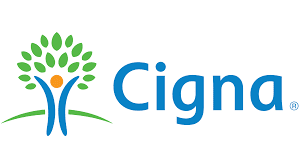Cigna vs. Aetna Medicare Plans
Cigna and Aetna are two leading Medicare insurance providers in the United States. Each company offers Medicare Advantage (Part C), Medicare prescription drug plans (Part D), and Medicare Supplement insurance (Medigap).
Key Points:
- Aetna ranks higher than Cigna in overall member satisfaction.
- Cigna offers better household discount opportunities (up to 25%) compared to Aetna (up to 6%).
- On average, Aetna’s premiums are comparable to Cigna’s.
Let’s look at what these top two providers offer in more detail.

Cigna Medicare Plan Highlights
Pros:
- Available in 48 states (varies by state and insurance plan)
- Up to 25% premium discounts on select plans
- A rewards program offering up to 25% off on health and wellness products and services
- Offers the option to conveniently bundle policies
Cons:
- Premiums are up to 12% higher than competitors
- Some members are unhappy with Cigna’s service, citing unresponsive reps, claim rejections, and high out-of-pocket costs
- Medigap plans aren’t available in Massachusetts or New York

Aetna Medicare Highlights
Pros:
- Available in all 50 states (varies by state and insurance plan)
- Up to 6% lower premiums in some states
- Ranks second in telehealth member satisfaction
- Medicare Advantage plans include a SilverSneakers membership
- Over 1.2 million network providers
Cons:
- Online price quotes and applications are not available in certain states and must be completed via phone
- Common complaints include delays and copay issues in claim handling and subpar customer service
- Medigap plans are not available in Alaska, Connecticut, Hawaii, Maine, Massachusetts, New York, Washington, or the District of Columbia
Cigna vs. Aetna: Medicare Plan Availability
Medicare Advantage Plans
Aetna, the fourth-largest Medicare Advantage provider, has 3.3 million members. Cigna, the seventh-largest, is looking to grow its current 600,000 memberships by expanding its network by 22% and enhancing plan benefits.
Both Aetna and Cigna offer various types of Medicare Advantage plans, including HMO plans (Health Maintenance Organization), PPO plans (Preferred Provider Organization), and SNPs (Special Needs Plans).
However, when selecting an SNP, Aetna only offers plans for dual-eligible beneficiaries (people eligible for both Medicare and Medicaid) and not those with chronic conditions.
Medicare Supplement Plans
Aetna, a subsidiary of CVS Health, offers 7 out of the 10 Medigap plans in certain states: A, B, C, D, F, G, and N. Aetna provides a 7% household discount for eligible applicants if their spouse, civil union partner, or another adult they’ve lived with for at least 12 months also enrolls in or already has an Aetna Medigap plan.
Cigna offers Medigap plans F, G, A, and N, plus high-deductible versions of G and F (in some locations). You can get up to a 20% premium discount; if you apply online, you’ll receive an extra 5% discount.
-
Bonus Tip:
- Aetna and Cigna both offer guaranteed renewable Medigap policies with no network restrictions – meaning you can see any doctor who accepts Medicare.
Prescription Drug Plans
Aetna offers three prescription drug plans: SilverScript SmartSaver, SilverScript Choice, and SilverScript Plus. Monthly premiums range from $10 to $103. Drugs can be received by mail at no extra cost.
SilverScript SmartSaver has $0 copays for Tier 1 drugs, and SilverScript Plus has $0 copays for Tier 1 and Tier 2 drugs from preferred pharmacies.
Cigna provides three drug plan options nationwide: Cigna Saver RX, Cigna Secure RX, and Cigna Extra RX. Monthly premiums range from $18 to $116. Each plan includes the option to obtain Tier 1 generic drugs with $0 copays.
Cigna vs. Aetna: Medigap Plan Costs
Premiums vary according to age, gender, location, and tobacco use. Our research shows the average monthly premiums for Cigna and Aetna’s popular Medigap plans are:
-
Aetna
-
Cigna
- Plan G ranges from $130 to $250
- Plan N ranges from $100 to $200
- Plan F ranges from $190 to $300
We have also analyzed Aetna and Cigna Medigap plans across various states to highlight the differences in premiums:
-
Texas:
Medigap Plan Aetna Cigna G $191.51 $134.67 F $242.90 $221.13 N $131.53 $100.01 A $154.44 $132.65 Sample quotes are for a 65 y/o nonsmoking female in TX zip code 77494.
-
Illinois:
Medigap Plan Aetna Cigna G $218.50 $168.85 F $261.90 $219.53 N $151.11 $118.41 A $184.76 $197.67 Sample quotes are for a 68 y/o nonsmoking male in IL zip code 62279.
-
Georgia:
Medigap Plan Aetna Cigna G $199.09 $170.03 F $232.91 $190.74 N $130.20 $119.58 A $160.35 $148.12 Sample quotes are for a 65 y/o nonsmoking male in GA zip code 30044.
-
Florida:
Medigap Plan Aetna Cigna G $224.74 $169.76 F $263.48 $213.27 N $149.94 $126.15 A $164.27 $161.27 Sample quotes are for a 65 y/o nonsmoking female in FL zip code 32514.
Premium Analysis
In summary, our research indicates that on average:
Cigna vs. Aetna: Extra Perks
Aetna members receive discounts on various health-related products and services, including online health coaching, massage therapy, acupuncture, chiropractic visits, nutrition services, and vision care.
Cigna offers its policyholders the Healthy Rewards program, providing up to 25% discounts on health and wellness products and services. Categories include weight management, fitness, vision and hearing care, alternative medicine, and mind/body wellness.
Cigna also offers standalone dental policies and bundled plans that include dental, vision, or vision and hearing coverage, with monthly premiums starting at $32.
Cigna vs. Aetna: Ratings
Medicare enrollees can benefit from the objective Medicare Star Rating system, which evaluates healthcare plans and insurance providers’ performance.
For 2023, both Aetna’s and Cigna’s Medicare Advantage plans received an average rating of 4.5 out of 5 stars.
Additionally, Cigna received an overall financial rating of A+ from A.M. Best, indicating a stable outlook for the company’s financial health. Aetna received an overall financial rating of A-.
Cigna vs. Aetna: Enrollment Process
Whether you enroll with Cigna, Aetna, or another provider, the best time to join a Medicare plan is when you’re first eligible.
Enroll in Original Medicare (Part A and Part B) at age 65, then choose your supplemental coverage.
Let’s review the enrollment periods for each plan type:
Medigap (Medicare Supplement)
- Medigap Open Enrollment: A six-month period that begins once you enroll in Medicare Part B.
Medicare Advantage (Part C)
- Initial Enrollment: When you first become eligible for Medicare, starting 90 days before and ending 90 days after your birthday month.
- Open Enrollment: Annually, from October 15 to December 7, this is the period to change your Advantage plan.
- Medicare Advantage Open Enrollment: From January 1 to March 31 each year, you can switch plans or return to Original Medicare.
Prescription Drug Plan (Part D)
- Initial Enrollment: When you first qualify for Medicare, spanning a seven-month period that starts 90 days before your birthday month and ends 90 days after.
- Open Enrollment: From October 15 to December 7 each year. This is when you can make changes to your Part D plan.
Bottom Line
Cigna and Aetna have a strong presence in the Medicare market, and both providers can offer valuable coverage and benefits for Medicare beneficiaries.
To make the best decision for your healthcare, evaluate each Medicare plan’s specific offerings, premium costs, provider networks, and personal needs.
Consulting with a licensed insurance agent can also be beneficial, as they can provide personalized recommendations tailored to your unique situation.
Sources: Cigna Expansion | Aetna Benefits | Medicare.gov | Compare Medigap Plans
